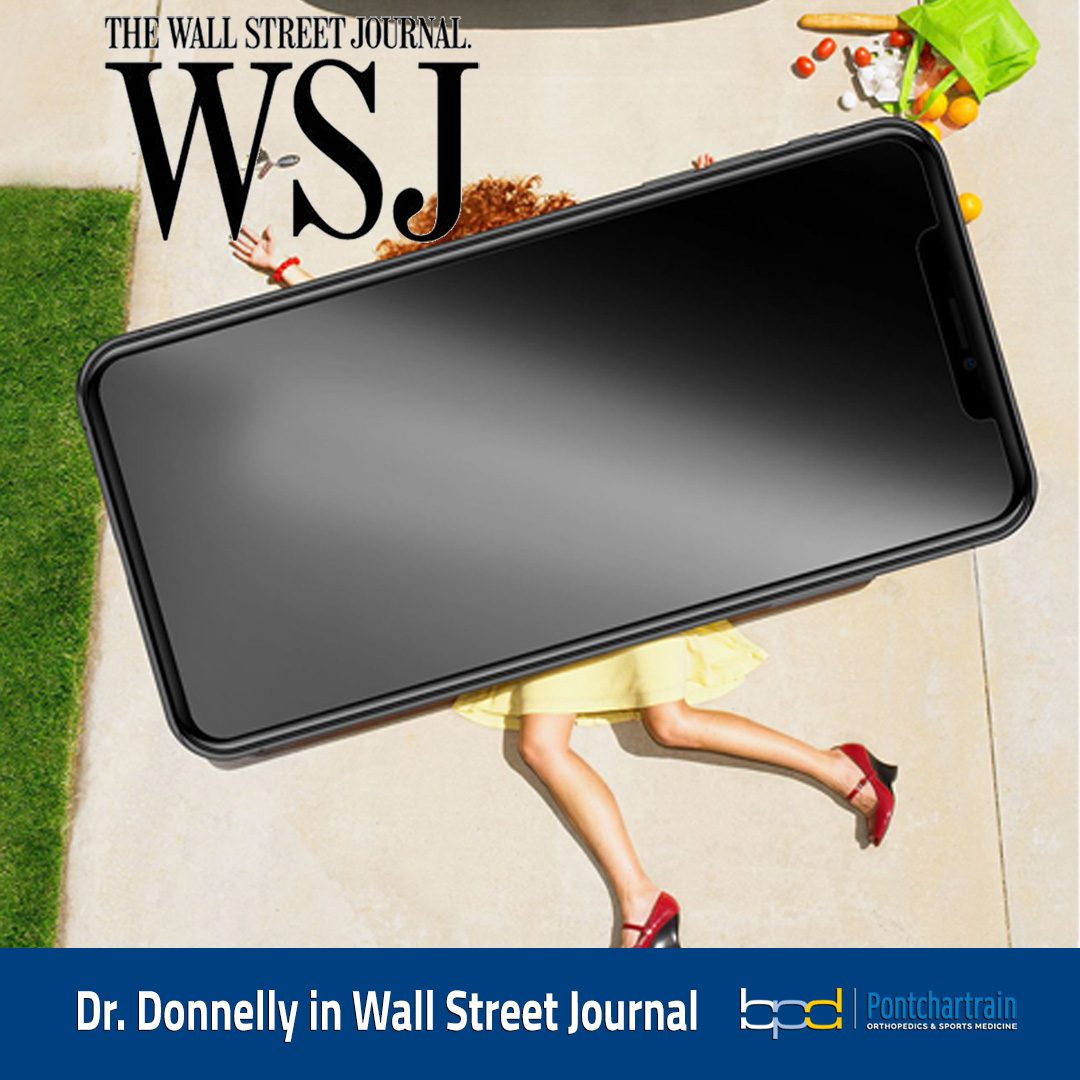
Phones are getting bigger and heavier every year. Six-inch-plus screens are great for displaying easy-to-read text and watching videos. But they make one-handed swiping and typing tough—not just for people with small hands, but also for those with normal-size mitts. In her Wall Street Journal article titled “Your Phone Is Too Big—Here’s How to Handle It,” Nicole Nguyen discusses how oversized phones, or “giganti-phone,” can cause pain and injury. The piece cites a familiar expert in the field of smartphone hand injuries– Brandon P. Donnelly, MD.
Get a Grip
Be conscious of how you hold your phone. Swiping and typing in the same hand or even holding your phone to your ear, with your elbow bent like a V, for long periods can cause numbness or tingling.Brandon P. Donnelly, MD
As Dr. Donnelly discusses in the article, be conscious of how you hold your phone. Swiping and typing in the same hand or even holding your phone to your ear, with your elbow bent like a V, for long periods can cause numbness or tingling. Phone grips could help with adjusting hand position and reducing strain on the thumb.
Finger-Friendly Settings
In the WSJ article, Nguyen suggests exploring “finger-friendly” settings for your phone. Apple’s iOS and Google’s Android have smartphone settings to bring hard-to-reach screen elements closer to your fingers.
On the iPhone, go to Settings > Accessibility > Touch and turn on Reachability. Once enabled, hold the phone in portrait orientation. If you have a device with Face ID, swipe down on the bottom edge of the screen, over the bar, and the top half of the screen will drop down. If you have a home-button iPhone, double-tap the button.
To move the keyboard to the side for easier typing, tap and hold the emoji icon when the keyboard is on screen. If you have multiple languages enabled, tap and hold the globe icon then tap one of the keyboard layouts.
On a Samsung device, go to Settings > Advanced features and enable One-handed mode. (On other Android devices, go to Settings > System > Gestures.) Shrink the screen so it’s within thumb’s reach by swiping down on the bottom edge of the device or double tapping the home button.
How to avoid a smartphone hand Injury
Dr. Donnelly emphasizes that while more research is required to better understand the role of handheld devices in these conditions, users can take steps to alleviate or prevent the occurrence of smartphone hand injuries. Placing your phone on a table to use it can help tremendously, as the mere act of propping up a phone with your hand can be damaging to the joints and muscles. Using hands-free methods of operating your phone can also relieve hand stress. Though it’s not what most smartphone users want to hear, limiting the amount of time spent on a smartphone and taking frequent breaks can also reduce the likelihood of developing a phone hand injury.
Think you have a smartphone hand injury?
Frequent smartphone use can cause very painful and life-altering injuries to the hands and fingers. If you think you or someone you know may have developed a phone hand injury, please contact our office today to schedule an evaluation with Dr. Donnelly.
About Dr. Brandon P. Donnelly, MD
 Dr. Brandon P. Donnelly is a board certified hand surgeon with Pontchartrain Orthopedics & Sports Medicine. Dr. Donnelly completed his hand and microsurgery fellowship at the prestigious Philadelphia Hand to Shoulder Center. Dr. Donnelly treats all ages of patients in the greater New Orleans area for hand, wrist, and elbow conditions.
Dr. Brandon P. Donnelly is a board certified hand surgeon with Pontchartrain Orthopedics & Sports Medicine. Dr. Donnelly completed his hand and microsurgery fellowship at the prestigious Philadelphia Hand to Shoulder Center. Dr. Donnelly treats all ages of patients in the greater New Orleans area for hand, wrist, and elbow conditions.
This site is not intended to and does not provide medical advice, professional diagnosis, opinion, treatment or services to you or to any other individual. Through this website and links to other websites, Brandon P. Donnelly, MD provides general information for educational purposes only. The content provided in this website and links, is not a substitute for medical care or treatment. You should not use this information in place of a consultation or the advice of your healthcare provider. Brandon P. Donnelly, MD is not liable or responsible for any advice, course of treatment, diagnosis or any other information, services or product you obtain through this site.

